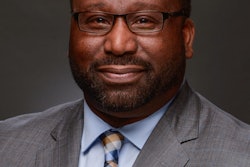While we know that hard work and persistence are essential to success, we also know that opportunity and access are the true keys to student persistence and achievement. The modern community college was established in all states following passage of the GI Bill, which resulted in hundreds of thousands of vets entering American higher education institutions. The Truman Commission recommended the establishment of public open access colleges across the nation to enable access and opportunity for all Americans.
 Dr. John Roueche
Dr. John RouecheThe 1960s saw the creation of more than 500 of these new “open door community colleges,” also widely known as “democracy’s college.” The result was a dramatic increase in the “college going” population.
But it soon became obvious that many of the new enrollees were missing fundamentals needed for academic success. The result was the establishment of “remedial courses” in English, reading and mathematics. These courses quickly became the most offered courses in the new community colleges.
I investigated the “effectiveness” of these compensatory offerings, seeking to identify colleges with success records in helping these students accomplish their remedial work and progress into general education courses. A number of “successful” colleges were identified. Sadly, we found that the attrition rate in these courses was simply atrocious. We could not find one college that could document the successful progression of students from remedial to general education courses. The president of the American Association of Junior Colleges (AAJC) remarked that the challenge now was to help community colleges “make good on the promise of the open door.”
My study, “SALVAGE, REDIRECTION OR CUSTODY: Remedial Education in the Community College,” was published by the AAJC in 1968, more than 50 years ago. Since then, community colleges have been working hard, with major support from a variety of national foundations to address high attrition and low achievement in so-called “developmental” courses.
In 1985, President Robert McCabe and Provost Eduardo Padron of Miami-Dade College (MDC) announced that MDC would embrace student success as much as opportunity. Many presidents were bothered with this goal, pointing out that most of the students attending community colleges were working students, single moms and almost all were first generation. Most educators were also of the view that the colleges served the goal of access and opportunity. Not many were willing to look beyond opportunity and examine achievement.
The faculty and staff at MDC demonstrated that an open door college can admit all comers and still provide the faculty and staff support needed to facilitate higher course completion, improved persistence to graduation and major improvements in student transfer to four-year colleges.
Professor George Baker and I conducted an intensive case study of the specific strategies employed at MDC and reported results in “ACCESS AND EXCELLENCE: The Open-Door College,” published by the American Association of Community Colleges in 1986. A number of national conferences and seminars were held to share the policies and practices that had brought about excellent results with a truly open-door college.
A few other community colleges followed MDC’s lead and improved results were reported. President Byron McClenney and his faculty and staff at the Community College of Denver (CCD) enrolled the most diverse student body in all of Colorado and had the highest persistence and graduation rate in the state. CCD also eliminated achievement gaps between races and genders. Others that have followed these models include Valencia College, Guilford Technical Community College and the Alamo Community College district, to name a few.
Sadly, even with all of the national attention and financial support from foundation and state budgets, our colleges have made little progress in eliminating achievement gaps with entering students. We know that colleges can provide the services and support structures needed to facilitate better student success. A few colleges have made dramatic improvements in the past 50 years. The question remains as to why all of the community colleges have not followed their lead.
I have long maintained that we need faculty and staff members who envision their responsibilities as student development specialists. It really doesn’t matter how much content one knows; it really is the role of our faculty and staff to stimulate and facilitate student progress in our institutions. We need to cooperate and coordinate with other agencies to help secure adequate food provisions and work with public housing to help our homeless (or almost homeless) populations.
To be successful as “democracy’s college,” we must make sure that our open door doesn’t continue to be a “revolving” door.
John Roueche is executive director of the Roueche Community Center for Community College Leadership, Department of Educational Leadership, College of Education, Kansas State University.
This article originally appeared in the December 10, 2020 edition of Diverse. You can find it here.


















